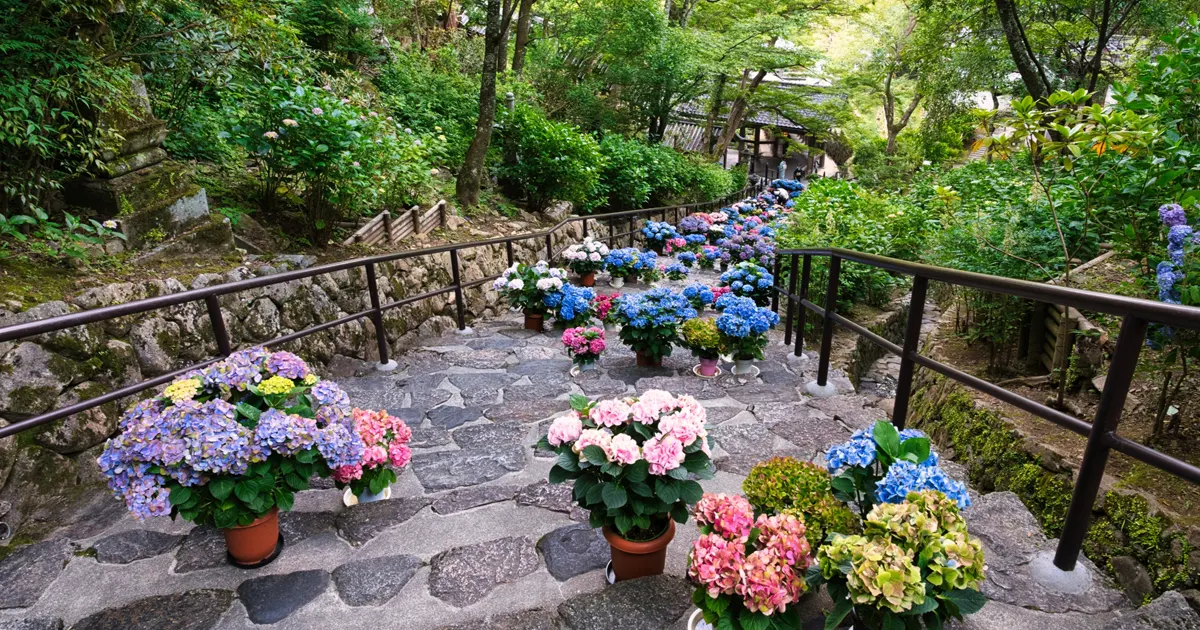Nestled in the quiet mountains of Nara, Hasedera Temple is a destination where seasonal flowers and nationally treasured cultural assets harmonize. The Eleven-Faced Kannon statue that appears after climbing the covered staircase and the view of Sakurai from the temple grounds captivate every visitor.
This article provides clear guidance on how to reach Hasedera, practical information for your visit, highlights within the grounds, and tips on how much time to spend. The details are arranged so that even first-time visitors to Japan or solo travelers can feel at ease.
As you walk through Hasedera, known as the “Temple of Flowers ,” you will encounter a blend of culture and nature that creates a unique experience. Here, we introduce its charms in detail.
Contents
Hasedera Temple Access Guide
Check the latest weather forecast before your visit: [weathernews ]
By Train
Osaka-Namba Station
Take the Kintetsu Osaka Line “Rapid Express” to Yamato-Yagi Station (about 35 min)
Transfer to a local train bound for Hasedera and get off at Hasedera Station (about 25 min)
From the station, walk about 15 min to the main gate
Total travel time: about 1 hr 20 min
Kyoto Station
Take the Kintetsu Kyoto Line “Limited Express” to Yamato-Yagi Station (about 50 min)
Transfer to a local train bound for Hasedera and get off at Hasedera Station (about 25 min)
From the station, walk about 15 min to the main gate
Total travel time: about 1 hr 30 min
Nagoya Station
Take the Kintetsu Nagoya Line “Limited Express” to Yamato-Yagi Station (about 1 hr 50 min)
Transfer to a local train bound for Hasedera and get off at Hasedera Station (about 25 min)
From the station, walk about 15 min to the main gate
Total travel time: about 2 hr 30 min
One Point Advice
Hasedera Visitor Info: Hours & Admission
Admission: Adults 500 yen, Elementary school students 250 yen
Hours: 8:30–17:00 (October–March until 16:30)
Closed: Open year-round
Official website: https://www.hasedera.or.jp/
Hasedera Highlights & Itinerary
Hasedera Main Hall|Eleven-Faced Kannon
The Main Hall, symbol of Hasedera Temple in Nara, enshrines a wooden Eleven-Faced Kannon statue over 10 meters tall. From its stage-style balcony, visitors can enjoy sweeping views of Sakurai town and seasonal flowers. This setting, where faith and nature coexist, offers a solemn atmosphere in which to quietly make a wish for safety during the journey.
Time required: 30–40 min
Admission: Included in temple entry
Noboriro|Covered 399-Step Stairway
A hallmark of Hasedera, the Noboriro is a roofed corridor covering a long stone stairway of 399 steps. Seasonal flowers line the path, and as you walk, the tranquil mood gradually deepens. In spring the peonies bloom, hydrangeas brighten early summer, and autumn brings vivid foliage—each season offers a different impression.
Time required: 20–30 min
Admission: Included in temple entry
Peony Garden|Flower Temple’s Colors
Hasedera Temple is renowned as the “Temple of Flowers ,” and especially popular in spring when about 7,000 peony plants of 150 varieties bloom. The sight is breathtaking, attracting many photographers. Hydrangeas, autumn foliage, and camellias also color the grounds in other seasons. The harmony of flowers and historic architecture makes this garden a favorite among visitors year-round.
Time required: 30–40 min
Admission: Included in temple entry
Hasedera Area Itinerary|Afternoon & Next Day
Abe Monjuin|Wisdom Temple (Walk)
About a 20-minute walk from Hasedera , Abe Monjuin is counted among Japan’s three great Monju temples . It enshrines Monju Bosatsu, revered as the deity of wisdom, making it popular with students praying for success in exams. The large zodiac flower mandala in the temple grounds changes design each year, offering a new delight with every visit.
Muroji|Women’s Koyasan Mountain Temple (Train)
About 40 minutes from Hasedera Station by Kintetsu train and bus, Muroji is a popular Japanese mountain temple known as “Women’s Koyasan.” National treasures such as the five-story pagoda stand in harmony with the natural setting. The atmosphere is solemn yet calm, and the temple is especially admired during the autumn foliage season.
Asuka|Ancient Japan Exploration (Next Day)
For the following day, the Asuka area—about one hour from Hasedera by train—offers rich encounters with Japan’s ancient history. Sites such as the Ishibutai Kofun and Asukadera Temple are must-sees for history enthusiasts. Cycling through the countryside is also popular, letting visitors follow the traces of ancient Japan amid rural landscapes.
Hasedera Temple Q&A
How much time should I plan for a visit?
About 1.5 hours to see the whole grounds, or around 2 hours if you want to take time with the flowers and statues.
Do I need a reservation?
No reservation is required for a standard visit. For special viewings or events, check the official information.
When is the best season to see flowers at Hasedera?
Peonies in spring, hydrangeas in early summer, and colorful autumn leaves are especially beautiful at this Japanese temple.
Is photography allowed?
You may take photos in the gardens and along the paths, but restrictions apply inside certain halls. Please follow the guidance.
Are there recommended spots nearby?
Within walking distance are teahouses in the temple town, and by short train or bus rides you can visit Abe Monjuin and Muroji.
Hasedera Travel Summary
Hasedera Temple in Nara is known as a popular temple of flowers , yet it is also home to the majestic Eleven-Faced Kannon and the famous covered stairway, making it a site of deep cultural significance. Walking through the grounds brings encounters with both nature and heritage in a unique, memorable setting.
With clear access and visitor information, even first-time travelers can enjoy their visit without worry. The seasonal flowers and special events ensure that each trip offers something new to discover.
Next, why not extend your journey to Muroji, another site in Nara where history and nature come together beautifully?

